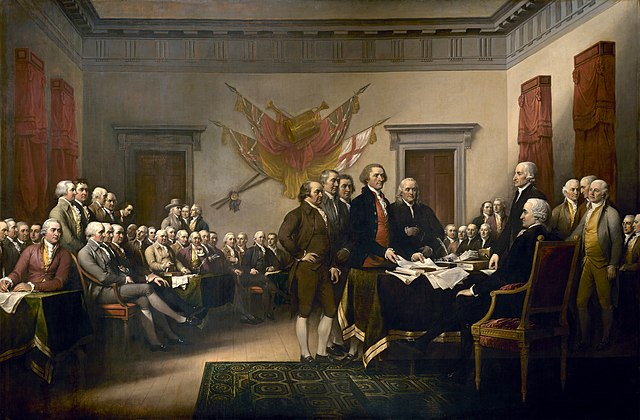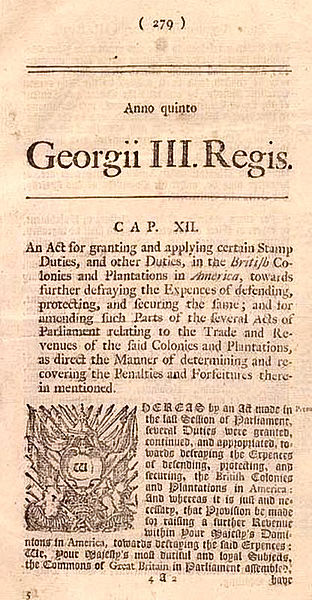The Gaspee affair was a significant event in the lead-up to the American Revolution. HMS Gaspee was a Royal Navy customs schooner that enforced the Navigation Acts around Newport, Rhode Island, in 1772. It ran aground in shallow water while chasing the packet boat Hannah on June 9 off of Warwick, Rhode Island. A group of men led by Abraham Whipple and John Brown I attacked, boarded, and burned the Gaspee to the waterline.
An August 1883 Harper's Magazine illustration of the burning of HMS Gaspee
An 1886 engraving of the burning of the Gaspee by Sons of Liberty
Image: Mock HMS Gaspee during 2023 Gaspee Days parade
Image: The Hannah chased by the Gaspee parade float
The American Revolution was a rebellion and political movement in the Thirteen Colonies which peaked when colonists initiated an ultimately successful war for independence against the Kingdom of Great Britain. Leaders of the American Revolution were colonial separatist leaders who originally sought more autonomy within the British political system as British subjects, but later assembled to support the Revolutionary War, which successfully ended British colonial rule over the colonies, establishing their independence, and leading to the creation of the United States of America.
The Committee of Five presenting its draft of the Declaration of Independence to the Second Continental Congress in Philadelphia on June 28, 1776, depicted in John Trumbull's 1818 portrait, Declaration of Independence
Notice of the Stamp Act 1765 in a colonial newspaper
Letter III of John Dickinson's Letters from a Farmer in Pennsylvania, published in the Pennsylvania Chronicle, December 1767
On June 9, 1772, the Sons of Liberty burned HMS Gaspee, a British customs schooner in Narragansett Bay.








